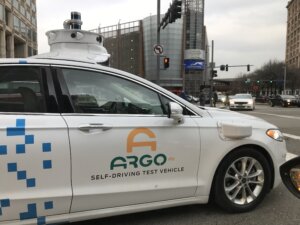The problem at its most succinct: “A piece of equipment will deteriorate much more predictably than a human body does.” (Paul Burke, VP of Digital Strategy, Highmark Health.)
Or how about this: “A human gets bored after looking at one hundred tomatoes, but a computer is happy to look at one hundred thousand.” (Robbie Sedgewick, Founder, and VP of Engineering, BrdgAI.)
On the fence about facial recognition and individual privacy? What if an agent, a visually astute AI, were deployed across Facebook, Instagram, YouTube, and anywhere else human faces are visible, searching to match every face it “sees” with a database of missing or trafficked children, and then alerting law enforcement when it is certain of a hit? That kind of social impact would potentially be a big positive impact on the lives of the oppressed, for example in the lives of the hundreds of thousands of children said to be at risk for sexual exploitation annually in North America, or the tens of thousands of human trafficking victims thought to be in transit throughout the United States each year. (Cara Jones, Marinus Analytics.)
Those three areas alone comprise just a fraction of the fascinating practical examples businesses large and small, along with public health agencies, and law enforcement, are addressing as they deploy artificial intelligence (AI) and machine learning (ML) to manage Big Data and gain an edge in previously intractable situations.
The Pittsburgh Technology Council’s Beyond Big Data: AI / Machine Learning Summit, held at the Pittsburgh Marriott City Center on Thursday 30 January 2020, brought together three keynote speakers, four sets of discussion panel panelists and moderators, about three hundred attendees, and a number of sponsors, and tabletop exhibitors, to do justice to Big Data topics in a very Pittsburgh way, creating the “opportunity for managers on every level to learn more about the opportunities of these technologies while connecting with others in the industry.”
Pittsburgh, you might ask? Well, it just so happens that “Pittsburgh is writing the rules of the road for self-driving technology.” (Gerardo Interiano, Head of Government Relations, Aurora.)
Pittsburgh, you might ask again? Well, it just so happens that “Boston, Montreal [are] angling to connect with Pittsburgh’s tech smarts” in what is to be called the AI-Triangle.
Pittsburgh, you might ask a third time? Well, it just so happens that “Carnegie Mellon has been a leader in AI research since Herbert Simon and Allen Newell invented the field in the 1950s. Since then, AI has evolved to address problems of probabilistic and numeric nature, leading to the incorporation of approaches from mathematics, engineering, operations research and economics.”
 The CMU – Simon – Newell contribution to AI overall, and Pittsburgh’s prominence in AI as a result, was one of the brightest gold nuggets, among many of them, shining radiantly in the excellent keynote talk given by Dr. Manuela Veloso, Managing Director, Head of AI Research, J.P. Morgan, and the Herbert A. Simon University Professor of Computer Science at Carnegie Mellon.
The CMU – Simon – Newell contribution to AI overall, and Pittsburgh’s prominence in AI as a result, was one of the brightest gold nuggets, among many of them, shining radiantly in the excellent keynote talk given by Dr. Manuela Veloso, Managing Director, Head of AI Research, J.P. Morgan, and the Herbert A. Simon University Professor of Computer Science at Carnegie Mellon.
(We at 3D InCites immediately responded with enthusiasm to Manuela’s remark that “AI is a series of components,” something echoed by other speakers during the day, for example from Grant Strimel, Amazon Alexa, saying he sees hardware shifting toward AI-specific configurations, and Robbie Sedgewick, BridgAI again, allowing as how “in the next decade, AI and Big Data infrastructure will become much more readily available.”)
 At DICK’s Sporting Goods, AI and ML will generate hundreds of millions of dollars in additional profits on an ~$8.5B annual revenue run rate by reducing returns, improving the customer (DICK’s calls them “athletes”) experience, extracting greater efficiencies from the supply chain, and amping up the eCommerce side of the business. At least that’s how Steve Miller, DICK’s Senior VP of Strategy and Analytics, sees it. – it’s all about science-based pricing and promotion.
At DICK’s Sporting Goods, AI and ML will generate hundreds of millions of dollars in additional profits on an ~$8.5B annual revenue run rate by reducing returns, improving the customer (DICK’s calls them “athletes”) experience, extracting greater efficiencies from the supply chain, and amping up the eCommerce side of the business. At least that’s how Steve Miller, DICK’s Senior VP of Strategy and Analytics, sees it. – it’s all about science-based pricing and promotion.
J.P. Morgan is looking to “fire all the traders” (joke), using AI to augment traders’ buy-sell-hold judgment; instead of having the AI act like a typical Quant, the idea is for the AI to use visual pattern recognition to compare the price swings of a typical security, and then make decisions and recommendations based on the optics alone.
 “Is predicting the future magic?”
“Is predicting the future magic?”
“No,” said Manoj Mishra, VP of Financial Services, CJI, as the Summit opened, “it’s artificial intelligence.”
Professor Veloso is working with synthetic datasets, AI, and Agents, in order to “match” the stock market and thereby gain commercial value by applying the insights. Imagine just how complex that task, to match the behavior of thousands and thousands of securities, commodities, currencies, futures, etc., and follow their microsecond by microsecond fluctuations.
Daunting, this digital stock market twin is.
Even more daunting to create, and maybe of even greater value once it exists, will be a human digital twin. Instead of the mouse model that forms the basis for much research into “the underlying processes in nature, up to possible therapies for diseases,” why not use a digital twin of the human body and have AI experiment with that?
Sure, a piece of equipment deteriorates much more predictably than a human body does (or a commodities market will gyrate much more predictably than does the body and its processes), but who isn’t up for a challenge?
 The college admission essay I wrote for Yale University, way back in 1974, was on the topic of computers and medicine. The innovative physician of the future, I remember writing, would be joined at the hip to a computer of some sort, and would use her digital assistant for the routine — or sometimes not — practice of medicine.
The college admission essay I wrote for Yale University, way back in 1974, was on the topic of computers and medicine. The innovative physician of the future, I remember writing, would be joined at the hip to a computer of some sort, and would use her digital assistant for the routine — or sometimes not — practice of medicine.
Fast forward forty-plus years and you have what I wrote not so long ago in a piece about smart manufacturing: “Healthcare has made huge, step-function improvements across a spectrum of deadly diseases, as well as with less-deadly chronic afflictions, by harvesting this complex input [generated by physician and patient], committing the proven disease presentation – disease diagnosis – and disease treatment models to medicine’s collective memory, and then teaching the next generation of healthcare providers both the general methods and the standard protocols essential to maintaining good health and successful outcomes. Maybe, in medicine, what seems a big data environment is really just clusters and clusters of loose small data connected by the collective neural network of highly trained doctors and their colleagues.”
 A human digital twin in Pittsburgh, you might ask? Well, beyond the world-beating work here on AI and ML at CMU it just so happens we have a certain UPMC right down the street.
A human digital twin in Pittsburgh, you might ask? Well, beyond the world-beating work here on AI and ML at CMU it just so happens we have a certain UPMC right down the street.
“The University of Pittsburgh Medical Center (UPMC) is a $20 billion integrated global nonprofit health enterprise that has 87,000 employees, 40 hospitals with more than 8,000 licensed beds, 700 clinical locations including outpatient sites and doctors’ offices, a 3.4 million-member health insurance division, as well as commercial and international ventures. It is closely affiliated with its academic partner, the University of Pittsburgh. It is considered a leading American health care provider.”
AI-CMU-ML-UPMC. The acronyms are a mouthful. But the synergies are enormous.
From Pittsburgh, PA, thanks for reading.
~PFW





















